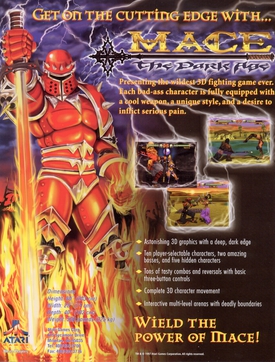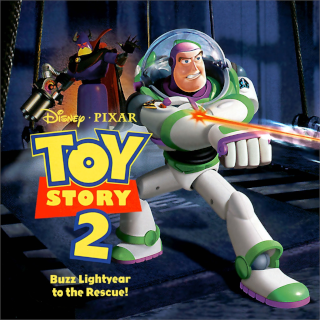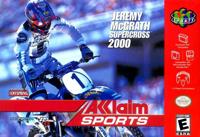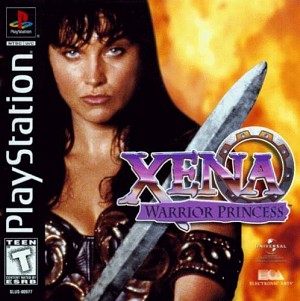
Xena is a fictional character from the Xena: Warrior Princess franchise, portrayed by New Zealand actress Lucy Lawless and co-created by Robert Tapert and John Schulian. She first appeared as a villain in the 1995–1999 television series Hercules: The Legendary Journeys before joining forces with Hercules. Xena was popular with fans, so the producers decided to create a spin-off with the character in the starring role. She later appeared in the subsequent comic book of the same name, as well as the spin-off animated film The Battle for Mount Olympus, and non-canon expanded universe material, such as books and video games.

Xena: Warrior Princess is an American fantasy television series filmed in New Zealand, which aired in first-run syndication from September 4, 1995, to June 18, 2001.

Mario Party 2 is a 1999 party video game developed by Hudson Soft and published by Nintendo for the Nintendo 64. The second game in the Mario Party series, it was released in Japan in December 1999 and worldwide in 2000. The game received mostly positive reviews from critics, who praised the improvements over the original, as well as the multiplayer and minigames, but criticized the lack of originality, while graphics received a better but otherwise mixed response.

Mortal Kombat 4 is the fourth main installment in the Mortal Kombat series of fighting games developed by Midway Games. Released to arcades in 1997, Mortal Kombat 4 is the first title from the series, and one of the first made by Midway overall, to use 3D computer graphics. It is also the last game of the series to have an arcade release. It was later ported to the PlayStation, Nintendo 64, PC, and Game Boy Color the following year, as well as an updated version titled Mortal Kombat Gold released exclusively for the Dreamcast.

Superman: The New Superman Adventures, commonly referred to as Superman 64, is a 1999 action-adventure game developed and published by Titus Interactive for the Nintendo 64. It is based on the television series Superman: The Animated Series and is the first 3D video game featuring Superman.

Sonic Shuffle is a Sonic the Hedgehog-themed party game developed and published by Sega for the Dreamcast in 2000. The game plays like a board game much in the same vein as Nintendo's Mario Party series, with up to four players moving their characters across a game board filled with a variety of spaces which can trigger different events. Some spaces will launch minigames that pit the players against each other in short competitive events.

18 Wheeler: American Pro Trucker, known in Japan as 18 Wheeler, is an arcade game developed by Sega AM2 and distributed by Sega. The game was released in arcades in 1999 and ported to the Dreamcast in 2000. It was released for the PlayStation 2 in 2001 and GameCube in 2002 by Acclaim Entertainment. Sega followed up on the success of 18 Wheeler with a sequel, The King of Route 66, which was released in the arcades in 2002 and ported to the PlayStation 2. This was one of the final arcade games to be ported to the Dreamcast after its discontinuation, before Sega became a third-party developer.

War Gods is a 3D fighting video game originally released to arcades by Midway Games in 1996. Ports for the Nintendo 64, PlayStation and Windows were released in 1997. In the game, players control one of ten fighters who have been given great power by a mysterious ore that crashed-landed on Earth from outer space. The object of the game is to defeat all the other fighters to become the most powerful warrior on the planet.

Mace: The Dark Age is a fighting video game released by Atari Games for arcade machines in 1997 and later ported by Midway Games to the Nintendo 64. Like many fighting games of the time, its style is marked by extreme violence, with characters graphically slaying defeated opponents. Utilizing 3dfx Voodoo chips for the hardware, the game received attention for its cutting-edge graphics and turned Atari a profit in the arcades. Critical response to the gameplay was much less enthusiastic.

Fighters Destiny, known in Japan as Fighting Cup, is a 1998 video game developed by Genki alongside Opus Corp for the Nintendo 64. It closely models the 3D fighting game standard set by Sega's Virtua Fighter, but integrates a unique point scoring system. The game's generic characters and unoriginal presentation have been panned by critics, but reviewers praised its point system and consider it to be one of the best fighting games on the Nintendo 64. It was followed by a sequel, Fighter Destiny 2, released in 2000.

Duke Nukem: Zero Hour is a 1999 third-person shooter game in the Duke Nukem series, developed by Eurocom and published by GT Interactive for the Nintendo 64. The game uses a relatively large 32 megabyte cartridge and can also use the Expansion Pak to improve graphics, though this slows down the frame rate. It features a 4-player split-screen multiplayer mode that uses a first-person view.

ECW Hardcore Revolution is a professional wrestling video game released by Acclaim Entertainment, based on the professional wrestling promotion Extreme Championship Wrestling (ECW). The game was released for the Nintendo 64, PlayStation, Game Boy Color, and Dreamcast in 2000. It was the first wrestling game to be based on ECW, as well as the first professional wrestling video game to receive a Mature rating from the ESRB, although the Game Boy Color version was rated Everyone. Acclaim followed this title with the release of a sequel, ECW Anarchy Rulz, in August 2000.

Armorines: Project S.W.A.R.M., known as Armorines in Europe, is a 1999 first-person shooter developed by Acclaim Studios London and released for the Nintendo 64, Game Boy Color and PlayStation. It is based on the Armorines comic book from Valiant Comics, which was bought by Acclaim Entertainment.

California Speed is a racing video game developed and published by Atari Games. The game was first released in arcades in 1998 and was ported to the Nintendo 64 in 1999 by Midway. The Nintendo 64 version of the game contains support for the Controller Pak and the Rumble Pak.

G.A.S.P!! Fighters' NEXTream, known in North America as Deadly Arts, is a 1998 fighting game developed by Konami Computer Entertainment Osaka and published by Konami for the Nintendo 64. The story follows a series of fighters that have each received a mysterious letter to compete in a legendary contest, and about a champion that has disappeared. The story and the player profiles do not appear in the instructions for the North American version; except for the title, it is basically the same as the Japan and Europe versions, with slightly changed voice messages, and different character nameplates.

Hot Wheels Turbo Racing is a racing video game released for the Nintendo 64 and PlayStation in 1999. It features 40 cars based on the Hot Wheels series of toys. It also features Kyle Petty's 1999 NASCAR stock car, as it was sponsored by Hot Wheels. The game features music from artists like Primus, Metallica, The Reverend Horton Heat and Mix Master Mike.

Toy Story 2: Buzz Lightyear to the Rescue is a 1999 platform game developed by Traveller's Tales and published by Activision and Disney Interactive. Based on Disney/Pixar's 1999 computer animated film Toy Story 2, it was released for the Nintendo 64, PlayStation, Microsoft Windows, and Macintosh in late 1999, while a Dreamcast version followed in 2000. The computer versions were released under the title Disney/Pixar's Action Game, Toy Story 2. A different version, a side-scrolling platform game titled Toy Story 2, was also released for the Game Boy Color in 1999.

Jeremy McGrath Supercross 2000 is a motocross racing video game developed by Acclaim Studios Salt Lake City and published by Acclaim Entertainment under their Acclaim Sports label for Nintendo 64, Game Boy Color, PlayStation and Dreamcast. It features eight stadium tracks, eight outdoor tracks, and an option for players to create their own custom tracks. In addition to having a racing game mode, players could perform dirt bike tricks in a stunt mode.

Wizards & Warriors is a role-playing video game for Microsoft Windows designed by David W. Bradley.

Xena: Warrior Princess is a hack and slash video game developed by Universal Studios Digital Arts and co-published by Electronic Arts and Universal Interactive Studios for the PlayStation in 1999. A Game Boy Color version was developed and published by Titus Interactive in 2001. Each version is based on the television series of the same name, which aired from 1995 to 2001.





















